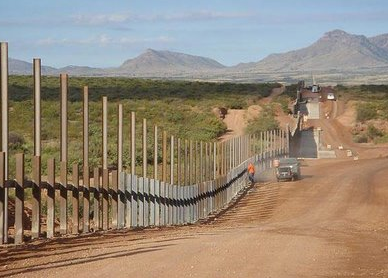President Trump seems bent on fulfilling all of his campaign promises as preliminary preparations for the border all between the United States and Mexico have begun.
Construction of segments of the wall in several areas along the border with Mexico have been initiated, with the United States Army Corps of Engineers having started preliminary building activity, according to reports from the Department of Homeland Security on Tuesday.
The drilling and soil testing are taking place in El Paso; Santa Teresa, N.M.; Calexico, Calif.; San Diego; and the Rio Grande Valley in South Texas. Mr. Lapan said the testing has been completed in El Paso and Calexico.
The agency has identified the San Diego area and the Rio Grande Valley as priority regions for new border walls, New York Times reports
The drilling and testing come as Customs and Border Protection, the parent agency of the Border Patrol, continues to evaluate dozens of proposals that have been submitted by vendors for designs for a border wall.
In response to the Presidential executive order that mandated construction of the wall in January, the Department of Homeland Security put out a call for prototypes of a “physically imposing” and “aesthetically pleasing” border wall in March.
However, the plan to build a border wall hasn’t been met with no degree of resistance as it was part of a contentious budget fight in Congress this year with members of Congress — Democrats and Republicans so far declining to provide funding for the project and instead expanded funding to increase the use of technology such as sensors at the border.
On Tuesday, though, the House Appropriations Committee approved a spending bill that included $1.6 billion for a wall. The bill would fund 74 miles of fencing along the southwest border.
The Department of Homeland Security has moved $20 million from other programs to pay for the construction of several border wall prototypes. Construction of the prototypes for a border wall is set to begin this summer in the San Diego area.
Significant opposition to a wall has also developed in some communities along the border.
In Texas, much of the land needed for a wall is private, and there is bipartisan opposition from most of the state’s congressional delegation.

